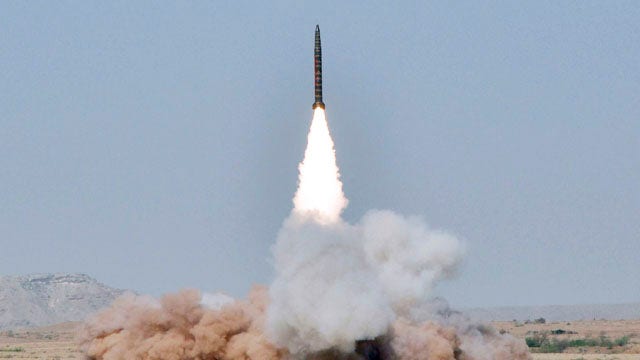Windjammer
ELITE MEMBER

- Joined
- Nov 9, 2009
- Messages
- 41,312
- Reaction score
- 181
- Country
- Location
Author

MISSILE DIALOGUE INITIATIVE
7th November 2023
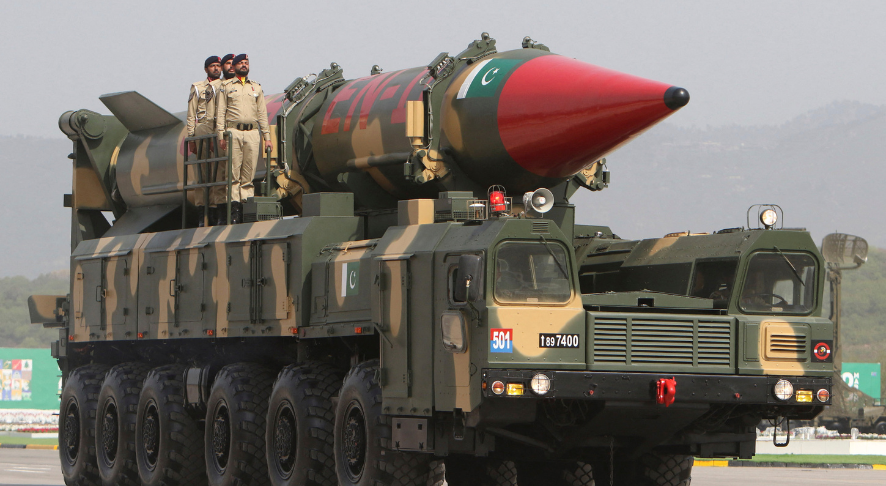
Shaheen-III long-range ballistic missile
On 18 October 2023, Pakistan conducted its second test launch of the Ababeel medium-range ballistic missile, which is the first in South Asia to have reached the testing phase that has been designed to carry multiple independently targetable re-entry vehicles (MIRVs). The weapon remains under development. This was Pakistan’s first acknowledged missile test since the April 2022 launch of the Shaheen-III medium-range ballistic missile and the first test since Chief of Army Staff General Asim Munir took office in November 2022. The test, conducted during the visit of Pakistan’s caretaker leader Prime Minister Anwaar-ul-Haq Kakar to China, followed a prior successful one in 2017 and reportedly succeeded. This is evidence that Islamabad is making progress in its goal of acquiring the capability to penetrate India’s nascent missile defences.
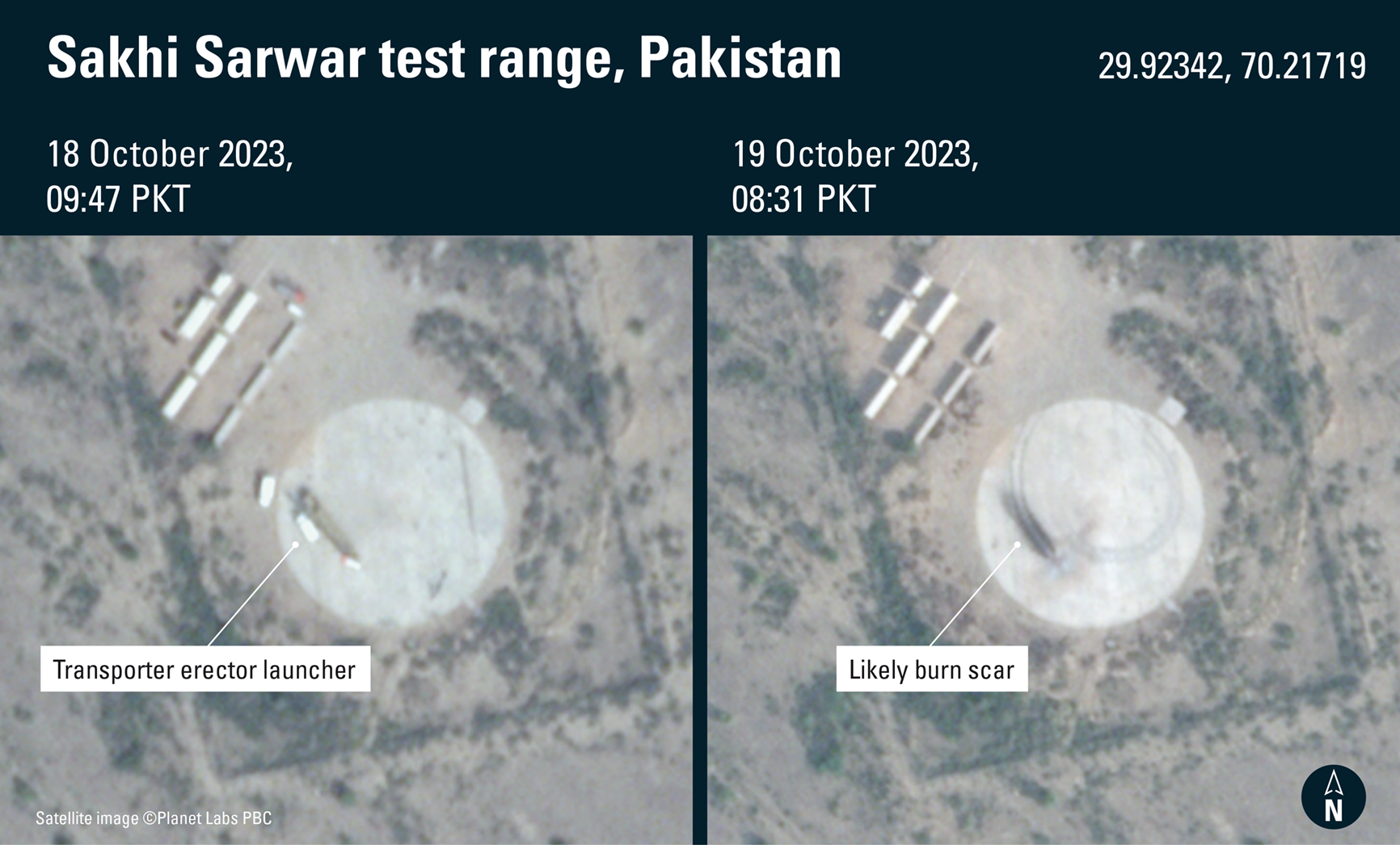
According to the media division of the Pakistan Armed Forces, the test occurred for the purpose of ‘re-validating various design [and] technical parameters and performance evaluation of different sub-systems’. The choice of the inland Sakhi Sarwar test site instead of coastal test ranges suggests that Islamabad may have been interested in tracking the boost and mid-flight phases of the missile from land. In 2018, Pakistan reportedly procured optical tracking equipment from China that it could have used to collect missile and payload performance data. It is unknown whether the test missile released decoy warheads during flight.
Comparing imagery from the 2017 and 2023 tests, Ababeel’s dimensions and proportions appear similar, suggesting that the current version does not feature a radically different design or payload capacity. Unlike the 2017 test, a multi-axle transporter erector launcher, likely supplied by China, appeared in the official 2023 recording taken by the armed forces. China and Pakistan reportedly have engaged in technology transfers as part of Beijing’s broader effort to support Islamabad’s missile programme. The presence of large numbers of civilians visible in the video suggest that the Army Strategic Forces Command has not yet taken control of the weapon, and that Ababeel is not yet poised to enter service. Once it does, however, arming it ‘could require additional fissile material for the warheads’ beyond existing stocks, as noted in a 2021 report by The International Institute for Strategic Studies.
Pakistan claims its missile and nuclear programmes are designed solely to deter India. Pakistani analysts (and officials, privately) have argued that a MIRV capability would increase stability and deterrence by increasing the chances of penetrating of India’s emergent ballistic-missile defences. India is researching and developing indigenously at least two land- and sea-based missile-defence programmes.
New Delhi’s purchase in 2018 of Russian-made S-400 Triumph (RS-SA-21 Growler) surface-to-air missile defences presents an immediate challenge to Pakistan’s ability to penetrate Indian airspace, with the subsonic Ra’ad and Babur land-attack cruise missiles being especially vulnerable. India reportedly possesses three S-400 batteries, with two more due for delivery by 2025. The S-400 is a mobile system, and India reportedly has based two at Pakistan-facing air-force stations in Punjab.
Like Pakistan, India is preparing its own MIRV capability. This is linked to its Agni VI intercontinental ballistic missile – in development and untested – which has been designed primarily to penetrate Chinese missile defences, not for use against Pakistan.
This article is part of a series from the Missile Dialogue Initiative (MDI) focusing on selected missile and arms-control developments. The MDI aims to strengthen international discussion and promote a high-level exchange of views on missile technologies and related international-security dynamics.
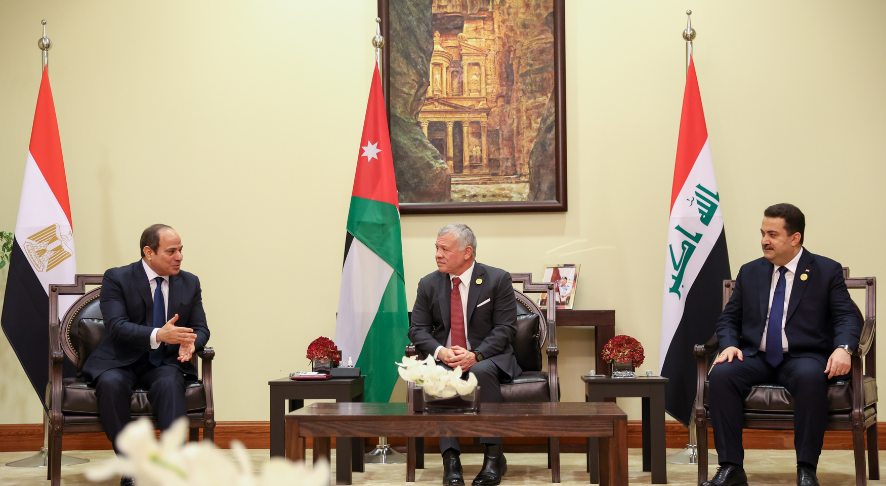

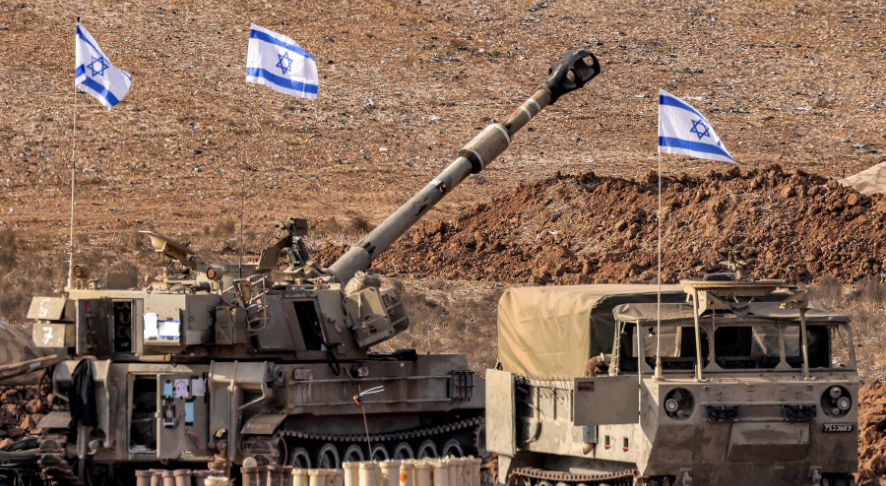
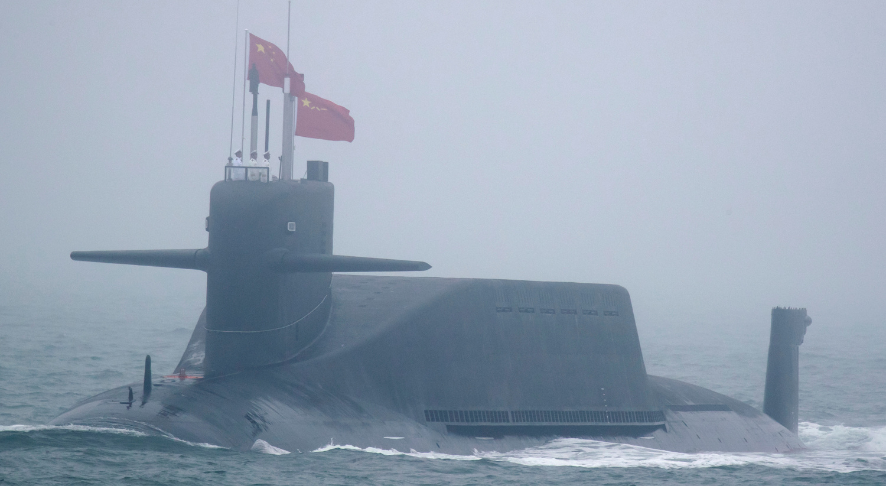

MISSILE DIALOGUE INITIATIVE
7th November 2023
Pakistan missile test confirms its MIRV ambitions
Pakistan’s test of the Ababeel medium-range ballistic missile, designed to carry multiple nuclear warheads, puts it one step closer to achieving an enhanced capability to penetrate India’s nascent missile defences.
Shaheen-III long-range ballistic missile
On 18 October 2023, Pakistan conducted its second test launch of the Ababeel medium-range ballistic missile, which is the first in South Asia to have reached the testing phase that has been designed to carry multiple independently targetable re-entry vehicles (MIRVs). The weapon remains under development. This was Pakistan’s first acknowledged missile test since the April 2022 launch of the Shaheen-III medium-range ballistic missile and the first test since Chief of Army Staff General Asim Munir took office in November 2022. The test, conducted during the visit of Pakistan’s caretaker leader Prime Minister Anwaar-ul-Haq Kakar to China, followed a prior successful one in 2017 and reportedly succeeded. This is evidence that Islamabad is making progress in its goal of acquiring the capability to penetrate India’s nascent missile defences.
Testing
The test launch occurred at the Sakhi Sarwar range in Punjab province. Pakistan issued seven Notice to Air Missions beforehand in compliance with article 3 of the 2005 India–Pakistan agreement on pre-notification for ballistic-missile tests. The main notice indicated an upper boundary of 930 kilometres seaward. While the actual range of the test is unknown, this suggests that the test occurred short of the missile’s maximum range of 2,200 km, since these notices customarily provide warnings covering the entire potential flight path of a missile. If the missile flew at full range beyond the notice area, it could have brushed close to the Omani coast.
According to the media division of the Pakistan Armed Forces, the test occurred for the purpose of ‘re-validating various design [and] technical parameters and performance evaluation of different sub-systems’. The choice of the inland Sakhi Sarwar test site instead of coastal test ranges suggests that Islamabad may have been interested in tracking the boost and mid-flight phases of the missile from land. In 2018, Pakistan reportedly procured optical tracking equipment from China that it could have used to collect missile and payload performance data. It is unknown whether the test missile released decoy warheads during flight.
Comparing imagery from the 2017 and 2023 tests, Ababeel’s dimensions and proportions appear similar, suggesting that the current version does not feature a radically different design or payload capacity. Unlike the 2017 test, a multi-axle transporter erector launcher, likely supplied by China, appeared in the official 2023 recording taken by the armed forces. China and Pakistan reportedly have engaged in technology transfers as part of Beijing’s broader effort to support Islamabad’s missile programme. The presence of large numbers of civilians visible in the video suggest that the Army Strategic Forces Command has not yet taken control of the weapon, and that Ababeel is not yet poised to enter service. Once it does, however, arming it ‘could require additional fissile material for the warheads’ beyond existing stocks, as noted in a 2021 report by The International Institute for Strategic Studies.
Reasons for MIRV’ing
Ababeel is one of two nuclear-capable medium-range ballistic missiles that Pakistan is developing; Shaheen-III is the other. The main difference between the two is Ababeel’s MIRV capability. Nothing visible from the test indicates the success or failure of the missile’s multiple-warhead capability, which is a key priority for Pakistan’s Strategic Plans Division.Pakistan claims its missile and nuclear programmes are designed solely to deter India. Pakistani analysts (and officials, privately) have argued that a MIRV capability would increase stability and deterrence by increasing the chances of penetrating of India’s emergent ballistic-missile defences. India is researching and developing indigenously at least two land- and sea-based missile-defence programmes.
New Delhi’s purchase in 2018 of Russian-made S-400 Triumph (RS-SA-21 Growler) surface-to-air missile defences presents an immediate challenge to Pakistan’s ability to penetrate Indian airspace, with the subsonic Ra’ad and Babur land-attack cruise missiles being especially vulnerable. India reportedly possesses three S-400 batteries, with two more due for delivery by 2025. The S-400 is a mobile system, and India reportedly has based two at Pakistan-facing air-force stations in Punjab.
Like Pakistan, India is preparing its own MIRV capability. This is linked to its Agni VI intercontinental ballistic missile – in development and untested – which has been designed primarily to penetrate Chinese missile defences, not for use against Pakistan.
This article is part of a series from the Missile Dialogue Initiative (MDI) focusing on selected missile and arms-control developments. The MDI aims to strengthen international discussion and promote a high-level exchange of views on missile technologies and related international-security dynamics.
Author











